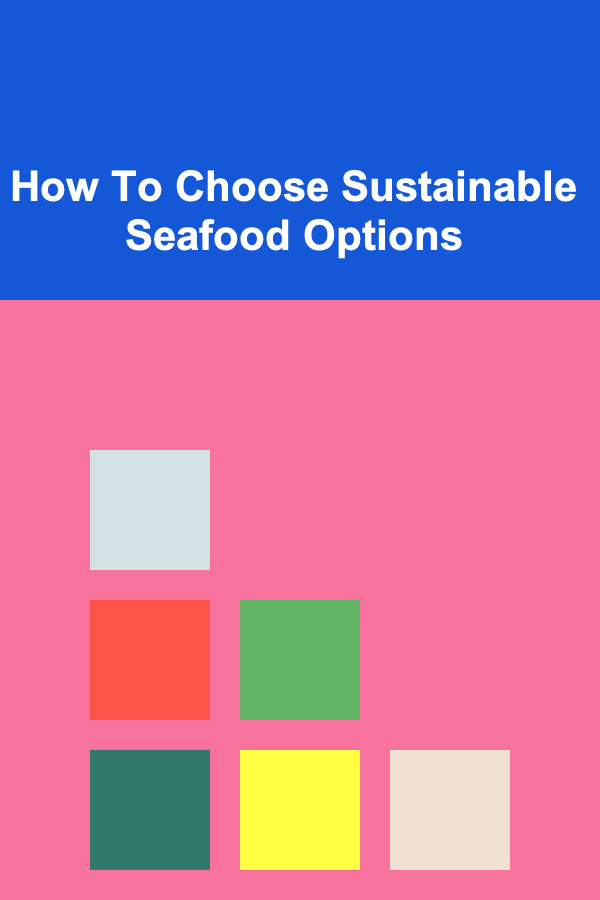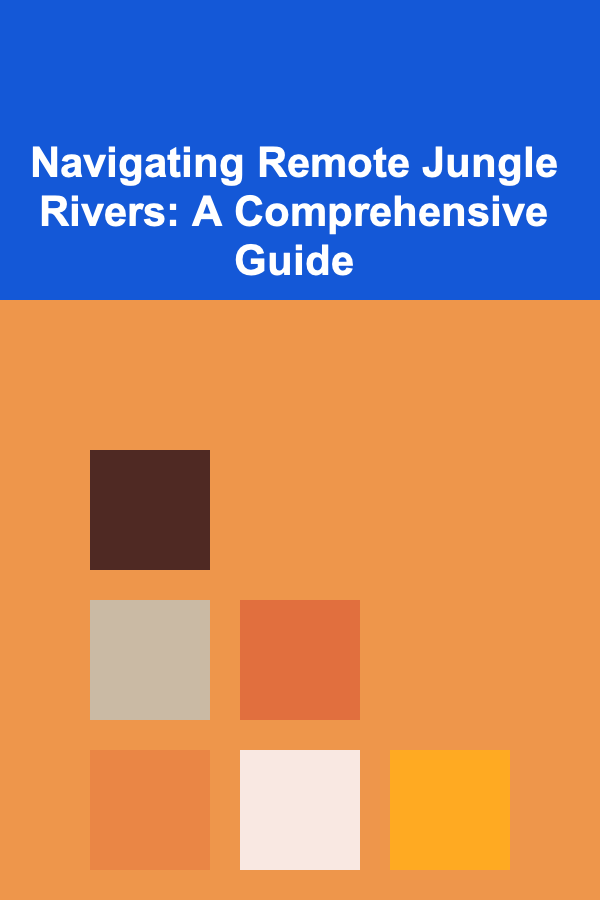
How To Choose Sustainable Seafood Options
ebook include PDF & Audio bundle (Micro Guide)
$12.99$10.99
Limited Time Offer! Order within the next:

As consumers become more conscientious about their environmental impact, the demand for sustainable food sources has grown exponentially. Among the many industries where sustainability is a pressing concern, seafood stands out due to the significant ecological and ethical challenges it faces. From overfishing and habitat destruction to pollution and climate change, the fishing industry has a complex relationship with the health of our oceans. Choosing sustainable seafood options has never been more crucial, and it is essential for consumers to make informed decisions.
In this article, we will explore the concept of sustainable seafood, the impact of unsustainable fishing practices, and how to choose sustainable seafood options that support the health of marine ecosystems while still providing healthy and nutritious food.
What is Sustainable Seafood?
Sustainable seafood refers to fish and other seafood that is caught or farmed in a way that ensures the long-term health of marine ecosystems, fish populations, and the surrounding communities. The goal of sustainable seafood practices is to meet current demand for seafood without depleting fish stocks, degrading ocean environments, or jeopardizing the livelihoods of future generations.
There are several key principles that guide sustainable seafood choices:
- Maintaining Fish Populations: The number of fish harvested must not exceed the population's ability to regenerate. This ensures that fish populations remain viable for future generations.
- Minimizing Environmental Impact: Fishing and farming methods should cause minimal damage to marine habitats, ecosystems, and biodiversity.
- Social and Economic Responsibility: Sustainable seafood practices also take into account the wellbeing of communities involved in fishing and farming. Fair wages, good working conditions, and respect for indigenous and local rights are crucial elements.
The Dangers of Unsustainable Fishing Practices
To understand the importance of sustainable seafood choices, we need to first explore the consequences of unsustainable fishing practices. Unsustainable fishing can have long-lasting effects on both marine ecosystems and the fishing industry itself.
1. Overfishing
Overfishing occurs when more fish are caught than can be naturally replenished. This can result in the depletion of fish populations and the collapse of entire fisheries. The United Nations Food and Agriculture Organization (FAO) reports that nearly one-third of global fish stocks are overfished. The consequences of overfishing are severe, including the loss of biodiversity, the disruption of marine food chains, and the collapse of local fisheries that rely on healthy fish populations.
2. Destruction of Marine Habitats
Fishing techniques such as bottom trawling, where large nets are dragged across the ocean floor, can cause extensive damage to marine habitats. This method destroys sensitive ecosystems like coral reefs, seagrass beds, and deep-sea habitats that are essential for the survival of many marine species. As these habitats are damaged or destroyed, the ability of the oceans to regenerate itself is compromised.
3. Bycatch and Unintentional Catch
Bycatch refers to the capture of non-target species, such as dolphins, sea turtles, and seabirds, during fishing operations. These species are often caught unintentionally and discarded, often dead or severely injured. Bycatch can lead to the decline of vulnerable species and disrupt the balance of marine ecosystems. Sustainable fisheries aim to minimize bycatch through the use of more selective fishing methods.
4. Pollution
Fishing operations, especially those involving industrial-scale operations, often contribute to ocean pollution. This includes plastic waste, toxic chemicals, and other pollutants that harm marine life. Fishing gear, such as discarded nets and lines, can entangle and kill marine animals, further contributing to the degradation of ocean ecosystems.
How to Identify Sustainable Seafood
Identifying sustainable seafood requires careful consideration of various factors, including the fishing or farming methods used, the species of fish, and the certification programs available. Here are several strategies to help you choose sustainable seafood:
1. Look for Certifications
One of the easiest ways to identify sustainable seafood is to look for third-party certification labels. These labels indicate that the seafood has been evaluated by an independent organization and meets specific sustainability criteria. Some of the most well-known certification programs include:
- Marine Stewardship Council (MSC): The MSC certification ensures that seafood is wild-caught and harvested in a way that maintains fish populations and minimizes environmental impacts. The MSC works with fisheries around the world to improve sustainability practices.
- Aquaculture Stewardship Council (ASC): The ASC certification applies to farmed seafood. It ensures that the farming methods used do not harm the environment, protect animal welfare, and support local communities.
- Global Aquaculture Alliance (GAA): The GAA's Best Aquaculture Practices (BAP) certification focuses on sustainable aquaculture practices that include environmental protection, animal health, and worker safety.
- Fair Trade Certified: The Fair Trade label indicates that the seafood has been sourced from fisheries and farms that provide fair wages, decent working conditions, and environmental protection measures.
When shopping for seafood, always look for these certifications on packaging, menus, or at your seafood market.
2. Choose Species That Are Not Overfished
Certain species of fish are more vulnerable to overfishing due to high demand and slow reproduction rates. Popular fish like tuna, cod, and orange roughy are often overfished and should be avoided when possible. Instead, look for species that are abundant and harvested sustainably. Fish such as mackerel, sardines, anchovies, and herring are generally more sustainable choices due to their abundance and fast reproduction rates.
You can also consult resources like the Monterey Bay Aquarium's Seafood Watch guide, which provides recommendations on which seafood species are sustainable based on current fishing practices and stock health.
3. Support Responsible Farming Practices
Farmed seafood can be a more sustainable option than wild-caught fish, but only if the farming practices are responsible. Conventional fish farming, also known as aquaculture, can lead to environmental damage if not managed properly. For example, farmed fish can escape into the wild, spreading diseases or competing with wild populations for resources. Additionally, some fish farms use antibiotics, chemicals, and feed that can pollute the surrounding water.
Look for farmed seafood that is certified by organizations such as the Aquaculture Stewardship Council (ASC) or the Best Aquaculture Practices (BAP). These certifications ensure that fish farms operate with environmentally friendly practices, provide good animal welfare conditions, and support local communities.
4. Avoid Seafood from Destructive Fishing Methods
Certain fishing methods are particularly damaging to the environment, such as bottom trawling and dynamite fishing. Bottom trawling involves dragging heavy nets across the ocean floor, which destroys habitats like coral reefs and seagrass beds. Dynamite fishing involves using explosives to stun or kill fish, but it also causes significant damage to marine ecosystems.
When purchasing seafood, ask about the fishing methods used and avoid those that employ destructive practices. Look for fisheries that use more selective methods, such as longlining , pole-and-line fishing , or trap fishing, which cause less harm to the environment.
5. Seasonal and Local Seafood
Eating seafood that is in season and locally sourced is another way to ensure sustainability. Local seafood is often harvested using methods that are more tailored to the specific environmental conditions, reducing the need for long-distance transportation and the associated carbon footprint. Additionally, supporting local fishermen and farmers helps sustain their businesses and the communities that rely on them.
Check with your local seafood markets or restaurants to see what is in season in your area, and prioritize local seafood options. This not only supports sustainable practices but also encourages the consumption of species that are well-managed in your region.
The Benefits of Choosing Sustainable Seafood
Choosing sustainable seafood benefits not only the environment but also your health and the economy. Here are some of the key advantages of supporting sustainable seafood:
1. Protecting Ocean Health
Sustainable fishing practices help to protect marine ecosystems and maintain biodiversity. By choosing sustainable seafood, you contribute to the health of oceans, ensuring that future generations can continue to enjoy the benefits of abundant, healthy oceans.
2. Supporting Local Communities
Sustainable seafood sourcing often involves supporting small-scale fisheries and aquaculture operations that are vital to local economies. These communities depend on responsible fishing and farming practices for their livelihoods, and by supporting sustainable seafood, you contribute to their economic stability.
3. Ensuring Healthier Seafood
Sustainable seafood is often fresher and more nutritious than fish that is caught or farmed under unsustainable conditions. Fish that are caught sustainably are usually free from harmful chemicals, antibiotics, and pollutants that can accumulate in fish raised through unsustainable practices. By choosing sustainable options, you are making a healthier choice for yourself and your family.
4. Promoting Ethical Practices
Sustainable seafood practices often include considerations of fair labor and working conditions for those involved in the fishing and farming industries. This ensures that workers are treated ethically and are not exploited or put in unsafe working environments.
Conclusion
Choosing sustainable seafood is an essential part of creating a more sustainable food system and protecting the health of our oceans. By understanding the environmental, social, and economic implications of our seafood choices, we can support practices that protect marine ecosystems, maintain fish populations, and ensure the long-term viability of the fishing and aquaculture industries.
To make responsible decisions, look for third-party certifications, avoid overfished species, support responsible farming practices, and choose local, seasonal seafood. As consumers, we have the power to drive positive change in the seafood industry, and every sustainable choice we make helps create a healthier, more sustainable world for future generations.

How To Understand Global Shipping for Print-on-Demand
Read More
How to Use DIY Soundproofing Techniques for Maximum Effect
Read More
Mastering Community Management: Essential Skills for the Modern Community Manager
Read More
Turning Your Deep Learning Knowledge into a Profitable Venture
Read More
How To Optimize Your Brain for Learning New Languages
Read More
Navigating Remote Jungle Rivers: A Comprehensive Guide
Read MoreOther Products

How To Understand Global Shipping for Print-on-Demand
Read More
How to Use DIY Soundproofing Techniques for Maximum Effect
Read More
Mastering Community Management: Essential Skills for the Modern Community Manager
Read More
Turning Your Deep Learning Knowledge into a Profitable Venture
Read More
How To Optimize Your Brain for Learning New Languages
Read More